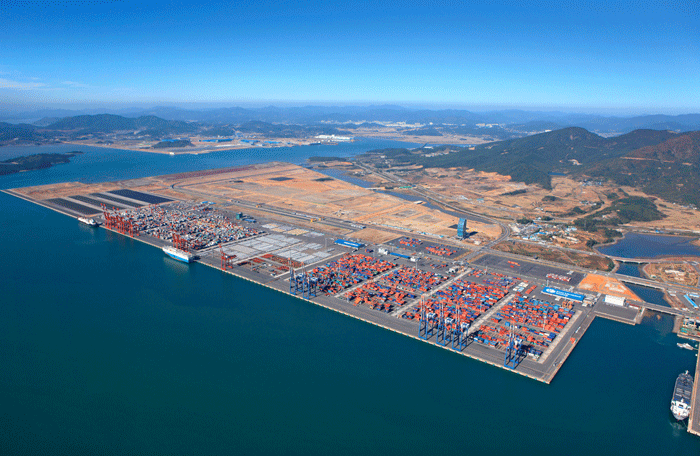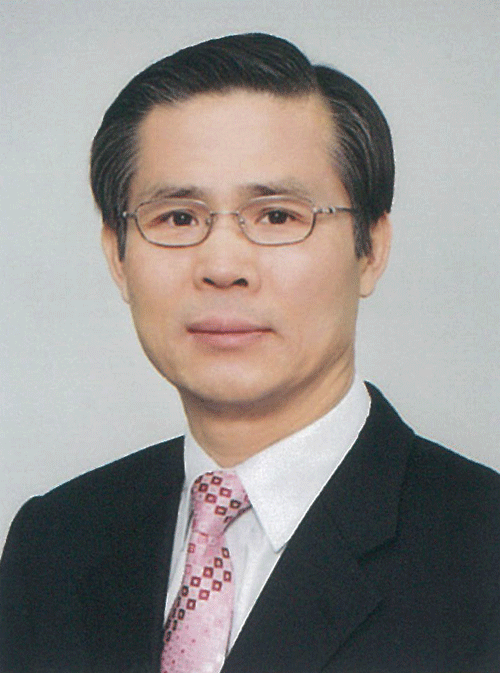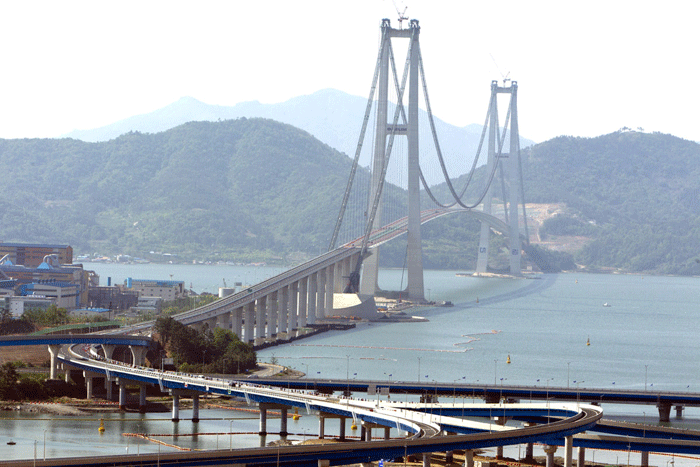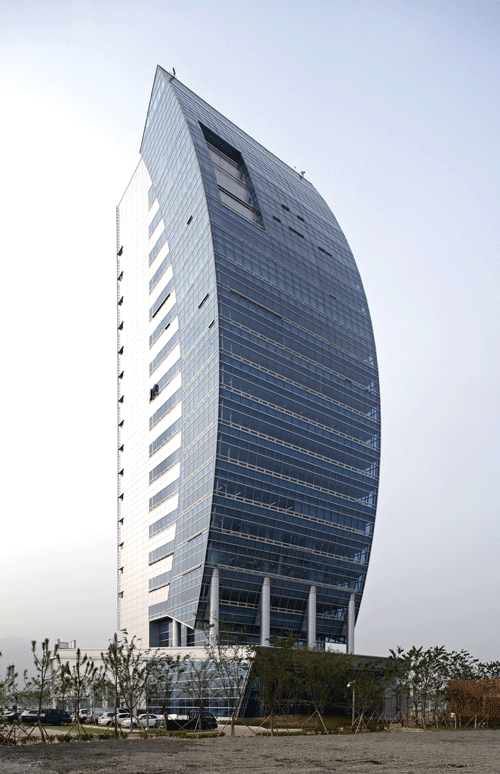Also GFEZ is located nearby
Gwangyang Port, with a water area of 145.19㎦ and a total of 84 berths, is capable of a port traffic of 60,000 vessels, such as container vessels, oil tankers, chemical ships, and LNG carriers, and handles over 240 million tons annually.
On top of that, Gwangyang Bay Area Free Economic Zone (GFEZ) is located nearby.
GFEZ, which is one of the best among the country’s eight FEZs, is the leading industry and logistics service center in Northeast Asia.

The access to Gwangyang from Seoul has been made easier through an increased number of expressways and subway routes along with the KTX bullet trains that takes three hours from the nation’s capital.
It has been 10 years since the GFEZ opened to help attract foreign investment and boost the economy.
Since then, it has attracted $12.71 billion from a total of 146 enterprises in the United States, China, Japan, France, the Netherlands and others. It also created more than 30,000 jobs.
GFEZ features outstanding infrastructure that leading international companies need for doing business in the 21st century and is fully prepared to nurture competitive and compatible niche markets in particular, as a part of its efforts to draw more global investors.
By identifying appropriate international companies and synergistic local partners, GFEZ is expected to create industrial clusters that can offer the best possible all-inclusive supply chain solutions for Northeast Asia.

Its location, traffic infrastructure, and cost of setting up plants is very convenient for enterprises.
GFEZ has numerous strengths and potential to shine among the FEZ in Korea as well as other countries.
The cost to lease a plant site here is only about one third of the cost required in the FEZ in Incheon and Busan-Jinhae,.And it makes the GFEZ a favorable place to do business.
The Gwangyang FEZ is comprised of five unique zones _ Gwangyang, Yulchon, Shindok, Hwayang and Hadong. Gwangyang District is at the heart of the zone, not only because of its central geographical location but also because it operates a container port.
It is also home to one of the most powerful transportation companies in the world, Hong Kong-based Hutchison Port Holdings.
The port has 34 state-of-the-art loading and unloading berths, three of which are fully automated. The port area covers 5.16 square kilometers and the lines of its berthing walls are 13 kilometers long.

Anyang District is the focal point of tourism in the region. With its beautiful scenery and pleasant climate, the district is ideal for golf courses, casinos, cottages, horse-riding clubs and sports parks. Furthermore, the Gwang- yang FEZ Authority plans to bring an international amusement firm to the area to build an ocean park.
Yulchon District is a stretch of land ideal for world-class manufacturing in petrochemical and steel-related industries.
Shindok District is being transformed into a state-of-the-art residential complex for foreign investors and employees of multinational firms operating in the Gwangyang FEZ. A total land area of 25.49 square kilometers has been set aside to build an elaborate modern suburban compound.
Hadong district is to be developed as a center of the world’s best shipbuilding and offshore plant businesses.
The Steel Works in Gwangyang is POSCO's second mill in the country after the mill in Pohang. The mill boasts having the largest steel plant in the world, the most modern technology, and the best facilities for steel manufacturing. It presently produces coil used for making bridges, iron structures, cars, refrigerators, and more. Its production capacity averages about 18 million tons per year. This plant is also a tourist trap for many people attracting more than 300,000 people from around the globe.
Gwangyang is a strategically important city placed in the southern center of the Korean peninsula. For these geopolitical reasons, Gwangyang is a city which functions as an axis for the balanced development of country concerning South Jeolla area with western parts of Mokpo and Muan.

The city is also home to K-League football team for Chunnam Dragons.
Mountains in the city include Baegunsan (1,217m), Gayasan ( 497m) and Gubonghwasan ( 473m). Baegunsan is the second-highest mountain in Jeollanam-do with the exception of Jirisan (1,915m).
Blessed with these and other natural resources, Gwangyang will also likely emerge as a new popular tourist destination in the Republic of Korea as well as the region in the years to come, Lee concluded.
Gwangyang is noted for many special features, which include the Grand Yi Sun-shin Bridge and the Yeosu Gwangyang Port Authority.
This historical bridge built on the location where the Joseon Dynasty Naval Hero, Admiral Yi Sun-shin was killed by the enemy. The Bridge is 2,260 meters long.
The Yeosu Gwangyang region has various natural advantages, including the favorable depth of the sea, but adequate attention has not been paid by the Central Government to encourage investment in the region by local and internatonal businesses. ?e welcome active investments in the region by both the domesic and intenrational investors,?said CEO Sun Weon-pyo of Yeosu Gwaghyang Port Authority.


